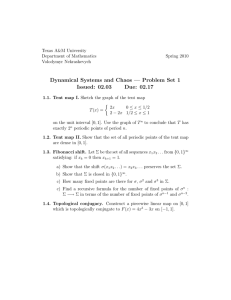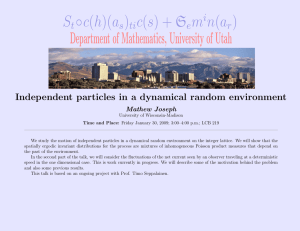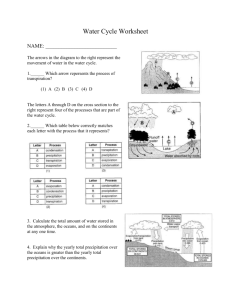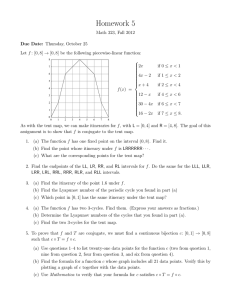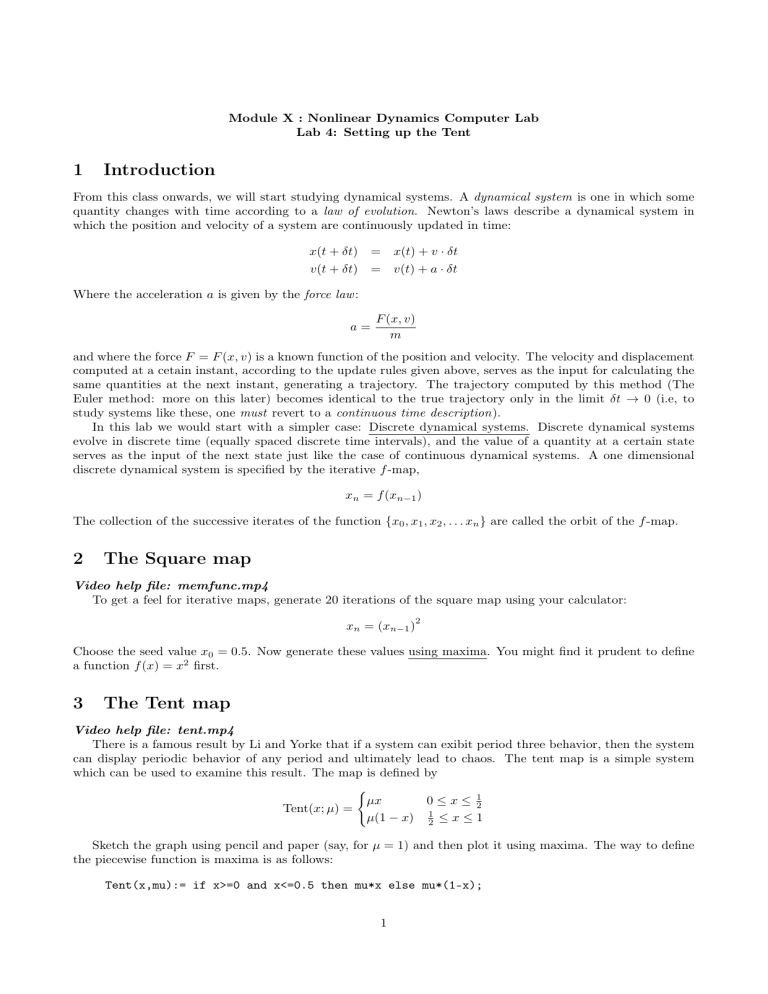
Module X : Nonlinear Dynamics Computer Lab
Lab 4: Setting up the Tent
1
Introduction
From this class onwards, we will start studying dynamical systems. A dynamical system is one in which some
quantity changes with time according to a law of evolution. Newton’s laws describe a dynamical system in
which the position and velocity of a system are continuously updated in time:
x(t + δt)
= x(t) + v · δt
v(t + δt)
= v(t) + a · δt
Where the acceleration a is given by the force law :
a=
F (x, v)
m
and where the force F = F (x, v) is a known function of the position and velocity. The velocity and displacement
computed at a cetain instant, according to the update rules given above, serves as the input for calculating the
same quantities at the next instant, generating a trajectory. The trajectory computed by this method (The
Euler method: more on this later) becomes identical to the true trajectory only in the limit δt → 0 (i.e, to
study systems like these, one must revert to a continuous time description).
In this lab we would start with a simpler case: Discrete dynamical systems. Discrete dynamical systems
evolve in discrete time (equally spaced discrete time intervals), and the value of a quantity at a certain state
serves as the input of the next state just like the case of continuous dynamical systems. A one dimensional
discrete dynamical system is specified by the iterative f -map,
xn = f (xn−1 )
The collection of the successive iterates of the function {x0 , x1 , x2 , . . . xn } are called the orbit of the f -map.
2
The Square map
Video help file: memfunc.mp4
To get a feel for iterative maps, generate 20 iterations of the square map using your calculator:
2
xn = (xn−1 )
Choose the seed value x0 = 0.5. Now generate these values using maxima. You might find it prudent to define
a function f (x) = x2 first.
3
The Tent map
Video help file: tent.mp4
There is a famous result by Li and Yorke that if a system can exibit period three behavior, then the system
can display periodic behavior of any period and ultimately lead to chaos. The tent map is a simple system
which can be used to examine this result. The map is defined by
(
µx
0 ≤ x ≤ 12
Tent(x; µ) =
µ(1 − x) 12 ≤ x ≤ 1
Sketch the graph using pencil and paper (say, for µ = 1) and then plot it using maxima. The way to define
the piecewise function is maxima is as follows:
Tent(x,mu):= if x>=0 and x<=0.5 then mu*x else mu*(1-x);
1
Check this function for various input values. Now list a dozen iterates of the map for each of the listed
combinations of the parameters µ and starting conditions x0 given in the following table and comment on their
periodic behavior (if any). It is easy to note the pattern of behaviour using maxima since you are able to look
at fractions instead of the decimal values. Note that you would have to kill the memory function containing the
orbit for a set before you can re-use it.
Set
I
II
III
IV
4
µ
1
2
1
3
2
2
x0
1 1 3
4, 2, 4
1 2
3, 3
3 6 1
,
5 13 , 3
1 1 1 1
,
3 5 , 7 , 11
Write-up
The items in italic are marked for inclusion in the sessions-record
1. List the Maxima code for generating the first ten iterates of the square map with seed 0.5 alsong with the
list values.
2. Sketch the graph using pencil and paper (say, for µ = 1) .
3. List the Maxima code for generating iterates of the Tent map.
4. List the values of all iterates of the tent map for sets I − IV for all combinations of the parameter values
and comment on their periodic behavior (if any).
2
